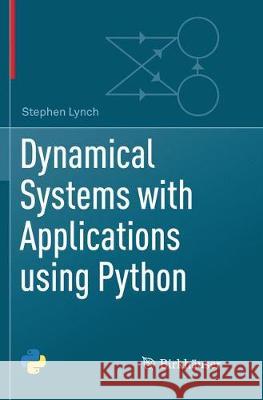Dynamical Systems with Applications Using Python » książka
topmenu
Dynamical Systems with Applications Using Python
ISBN-13: 9783030086244 / Angielski / Miękka / 2019 / 665 str.
Kategorie:
Kategorie BISAC:
Wydawca:
Birkhauser
Język:
Angielski
ISBN-13:
9783030086244
Rok wydania:
2019
Wydanie:
Softcover Repri
Ilość stron:
665
Waga:
0.90 kg
Wymiary:
23.62 x 15.49 x 2.54
Oprawa:
Miękka
Wolumenów:
01











